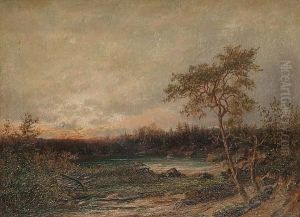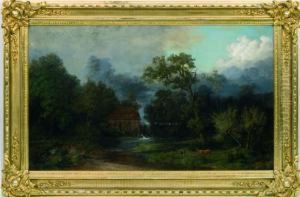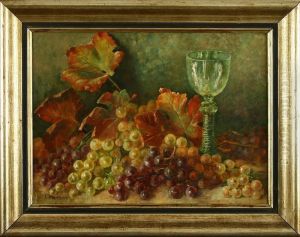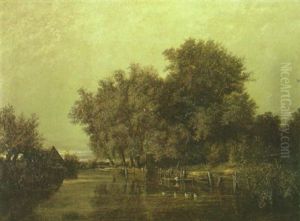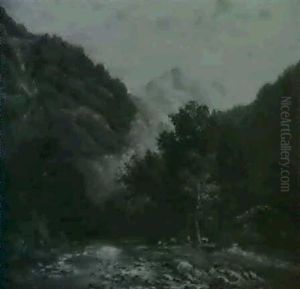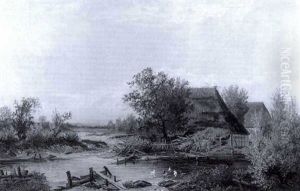Theodor Martens Paintings
Theodor Martens was a Russian-German painter, primarily known for his landscape paintings and his role in the late 19th and early 20th-century art movements in Russia. Born in 1870 in Saint Petersburg, Russia, to a family of German descent, Martens found himself at the crossroads of diverse cultural influences from an early age. This multicultural background played a significant role in shaping his artistic language, allowing him to blend the Russian landscape tradition with Western European artistic principles.
Martens studied at the Imperial Academy of Arts in Saint Petersburg, where he was influenced by the Russian Peredvizhniki (Wanderers) movement, a group of artists who sought to create socially conscious art. Despite this influence, Martens developed a unique style characterized by a focus on the serene and harmonious aspects of nature. After completing his studies, he traveled across Europe, further enriching his artistic vocabulary by encountering the works of the Impressionists and Post-Impressionists. These experiences allowed him to experiment with light and color, eventually leading to a distinctive approach that combined the realistic depiction of the Russian countryside with a nuanced understanding of atmospheric effects.
Martens' career flourished in the late 19th and early 20th centuries, a period marked by significant social and political changes in Russia. Despite the tumultuous backdrop, his works often conveyed a sense of peace and timelessness, detached from the contemporary struggles. He participated in numerous exhibitions and was a member of various artistic societies, contributing to the vibrant cultural scene in Saint Petersburg and beyond.
The outbreak of the Russian Revolution in 1917 and the subsequent civil unrest had a profound impact on Martens and the artistic community. The changing political landscape and the rise of Soviet power led to a decline in traditional patronage and a shift towards art that served ideological purposes. Martens, like many of his contemporaries, found it challenging to navigate this new environment. His work from this period reflects a continued commitment to landscape painting, though the themes and settings often resonate with a sense of nostalgia and loss.
Theodor Martens died in 1942, leaving behind a legacy that captures the beauty of the Russian landscape while also reflecting the complex historical context in which he worked. His paintings are held in various museums and collections, serving as a testament to his skill in portraying the natural world and his enduring influence on Russian art.
